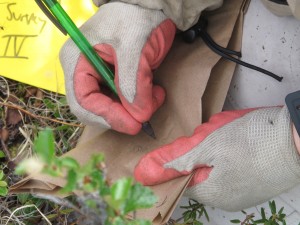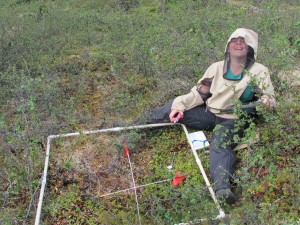There is continually frozen ground (permafrost) sitting beneath the Arctic, but each summer, endless sunshine and warming air temperatures heat the soils from above. A fraction of the near surface soil thaws and refreezes every year. This is called the active layer. Climate change and warming Arctic temperatures may deepen annual thaw and therefore threaten deeper permafrost. This warming has the potential to unlock incredible amounts of carbon that have previously been frozen and locked away in permafrost for thousands of years. As soils thaw, microbes can access more carbon and release greenhouse gases like carbon dioxide and methane into the atmosphere. The amount of belowground carbon readily available for microbial activity is dependent on depth of the active layer. Furthermore, the thaw depth is incredibly variable across the terrain and is influenced by an array of physical and biological factors.
The goal of my project is to predict how active layer depths vary across the Y4 watershed. The Y4 watershed is the relatively small stream system that sits just north of the Northeast Science Station and feeds into the Panteleikha, later the Kolyma River in northeastern Siberia and is the focus of this year’s Polaris Project core group. To understand the patterns of active layer depth throughout the Y4, I am using data collected as part of the annual terrestrial survey to identify which factors influence active layer thaw depth. After I have identified these influential factors, I will use them to predict depth of active layer throughout the Y4 watershed. I will use GIS and remote sensing tools to manipulate the data I collect here in Cherskiy to develop my senior honors thesis at Clark University. Ultimately, I hope to discover a predictable pattern between active layer thaw depth and its influencing variables to in turn be able to approximate the volume of thawed active soils within the Y4 watershed.





Comment(1)-
Anita Hunt says
July 23, 2013 at 9:33 pmHi Casey,
The more I read from these blogs, the more questions I have! Unfamiliar as I am to arctic seasonal temperatures, is there a period of time during the summer when the active layer is subject to limited thawing in a 24 hour period? Does a summer “day” temperature remain constant for 24 hours? Some friends of mine from Alaska say there are two seasons there – cold and not cold. Much left to the imagination in that description 🙂